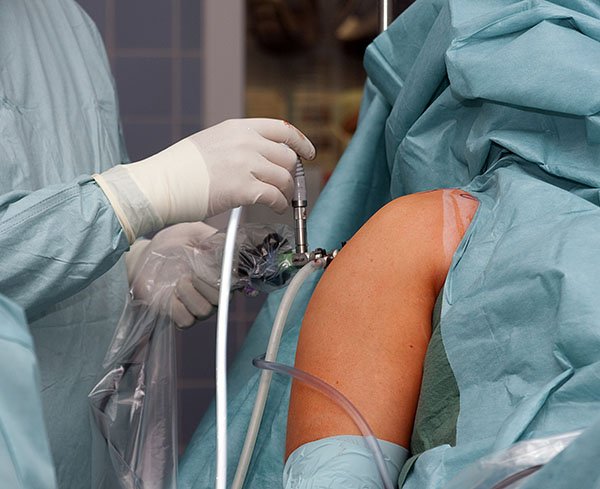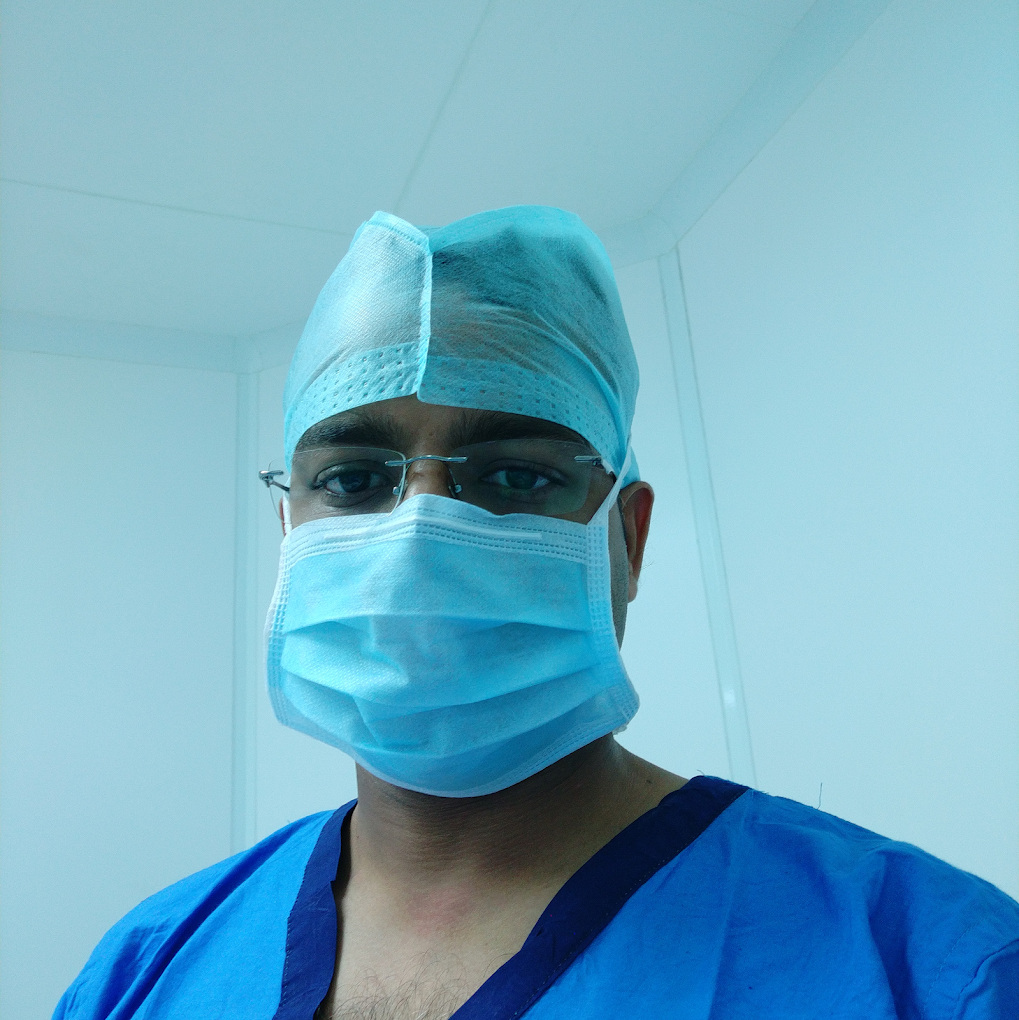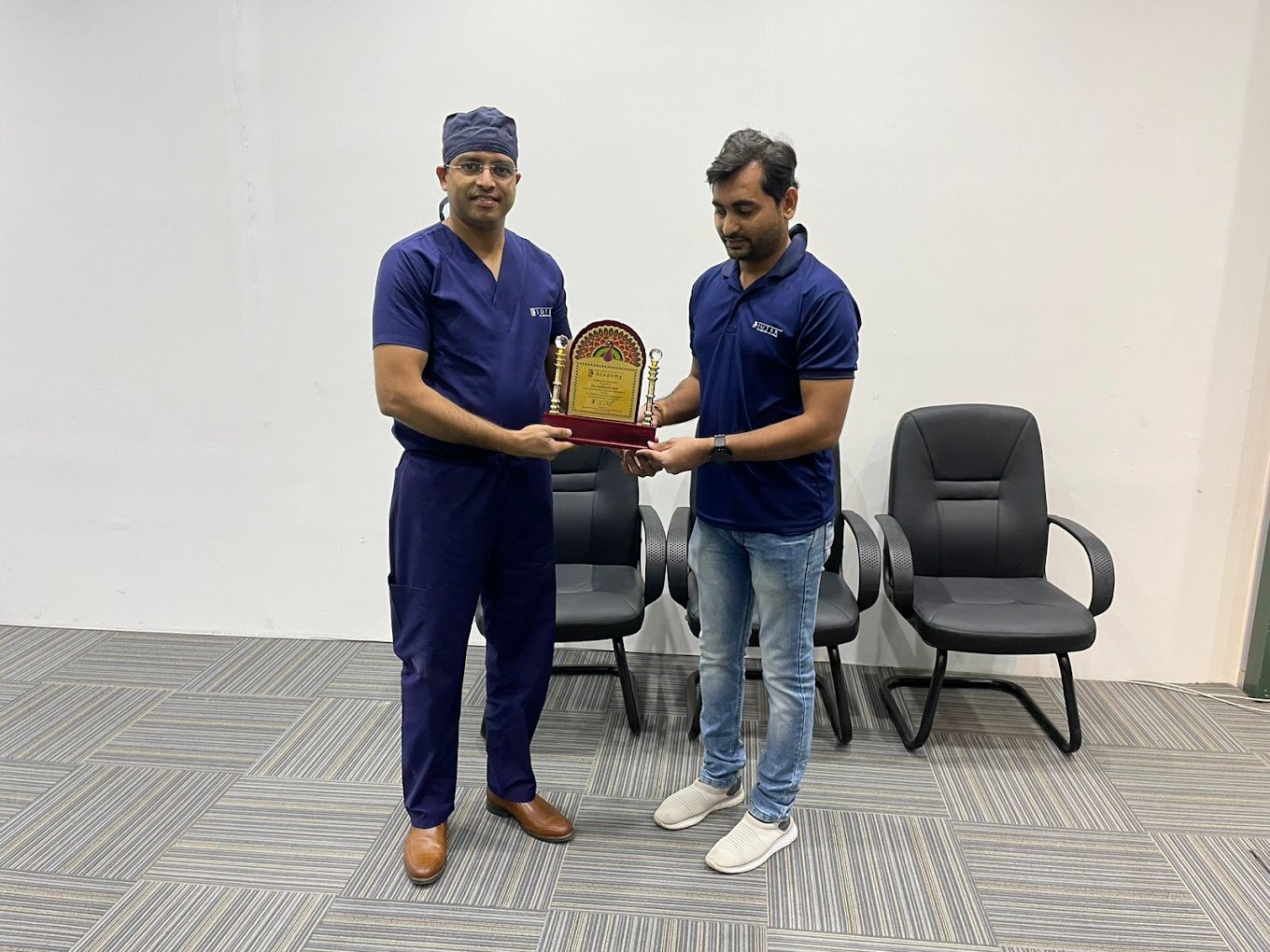SHOULDER ARTHROSCOPY
Shoulder arthroscopy is a minimally invasive surgical procedure that involves the use of a small camera, called an arthroscope, to diagnose and treat various shoulder joint conditions. This technique allows orthopedic surgeons to visualize the interior of the shoulder joint and perform therapeutic procedures through small incisions.
Procedure
Anesthesia :- The patient is typically placed under either general anesthesia or regional anesthesia, depending on the specific procedure and patient preferences.
Incisions :- Small incisions, usually around 5 millimeters, are made around the shoulder. These serve as access points for the arthroscope and other specialized instruments.
Arthroscopy :- The arthroscope, a thin tube with a camera on its end, is inserted through one of the incisions. The camera transmits real-time images of the inside of the shoulder joint to a monitor, allowing the surgeon to assess the condition of the bones, cartilage, ligaments, and other structures.
Treatment :- Depending on the findings, the surgeon may use additional incisions to introduce specialized instruments. Common procedures during shoulder arthroscopy include:
- Rotator Cuff Repair: Repair of tears in the rotator cuff tendons.
- Labrum Repair or Reconstruction: Addressing tears or instability in the labrum, the cartilage rim around the shoulder socket.
- Removal of Bone Spurs: Bony outgrowths that may be impinging on surrounding structures.
- Treatment of Shoulder Impingement: Removal of inflamed tissue or bone spurs causing impingement of the rotator cuff.
- Release of Frozen Shoulder: Manipulation or release of tight tissues in the shoulder joint.
Closure: After the necessary repairs or adjustments are made, the instruments are removed, and the incisions are closed with stitches or adhesive strips.
Indications for Shoulder Arthroscopy
Rotator Cuff Tears :- Tears in the tendons of the rotator cuff.
Shoulder Impingement Syndrome :- Compression of the rotator cuff tendons and bursa.
Labral Tears :- Tears in the labrum, often associated with shoulder instability.
Frozen Shoulder (Adhesive Capsulitis) :- Stiffness and reduced range of motion in the shoulder.
Shoulder Instability :- Repetitive dislocations or a feeling of looseness in the shoulder joint.
Advantages of Shoulder Arthroscopy
Minimally Invasive :- Small incisions result in less tissue damage compared to open surgery.
Faster Recovery :- Typically, patients experience quicker recovery times compared to traditional open surgery.
Diagnostic Accuracy : The arthroscope provides a clear and magnified view of the shoulder joint, aiding in accurate diagnosis and targeted treatment.








